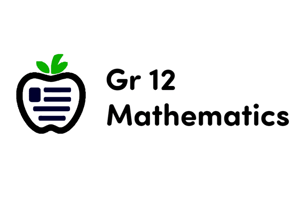Podcast
Questions and Answers
Explain the difference between a sequence and a series in mathematics.
Explain the difference between a sequence and a series in mathematics.
A sequence is a list of numbers in a specific order, while a series is the sum of the terms in a sequence.
What is the general formula to find the nth term of an arithmetic sequence?
What is the general formula to find the nth term of an arithmetic sequence?
The general formula to find the nth term of an arithmetic sequence is: a + (n-1)d, where 'a' is the first term and 'd' is the common difference.
Define geometric series and give an example.
Define geometric series and give an example.
A geometric series is the sum of the terms in a geometric sequence. An example of a geometric series is: 1 + 2 + 4 + 8 + 16.
Explain the concept of sequence and series in Class 11 Mathematics.
Explain the concept of sequence and series in Class 11 Mathematics.
What is the key difference between a sequence and a series?
What is the key difference between a sequence and a series?
Provide an example of a sequence and its corresponding series.
Provide an example of a sequence and its corresponding series.
Flashcards are hidden until you start studying
Study Notes
Sequences and Series
Understanding Sequences and Series
- A sequence is an ordered list of numbers, often denoted as {a₁, a₂, a₃, ...} or {an}.
- A series is the sum of the terms of a sequence, often denoted as a₁ + a₂ + a₃ + ... or Σan.
Arithmetic Sequences
- The general formula to find the nth term of an arithmetic sequence is an = a₁ + (n - 1)d, where an is the nth term, a₁ is the first term, and d is the common difference.
Geometric Series
- A geometric series is the sum of the terms of a geometric sequence, where each term is obtained by multiplying the previous term by a fixed constant, called the common ratio (r).
- Example: 2 + 4 + 8 + 16 + ... is a geometric series with first term 2 and common ratio 2.
Key Difference between Sequences and Series
- The key difference lies in the way the terms are combined: a sequence is a list of terms, while a series is the sum of those terms.
Example of a Sequence and its Corresponding Series
- Sequence: 2, 4, 6, 8, ... (each term is obtained by adding 2 to the previous term)
- Series: 2 + 4 + 6 + 8 + ... (the sum of the terms of the sequence)
Studying That Suits You
Use AI to generate personalized quizzes and flashcards to suit your learning preferences.




